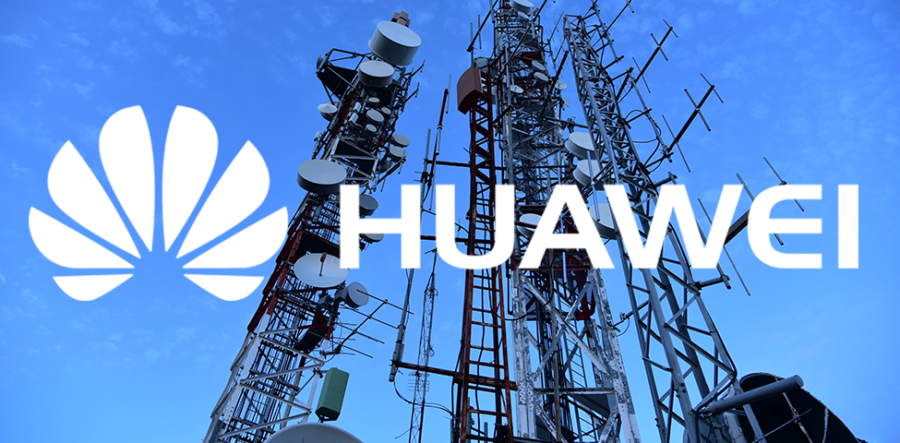The GSM Association (“Association”) makes no representation, warranty or undertaking (express or implied) with respect to and does not accept any responsibility for, and hereby disclaims liability for the accuracy or completeness or timeliness of the information contained in this document.
Executive Summary
The GSMA is committed to increasing access to, and adoption of the mobile internet, especially for underserved population groups. This case study identifies promising infrastructure solutions and showcases success cases exploring how the RuralStar2.0 solution overcomes the high cost of providing mobile connectivity in rural locations and offers operators significant OpEX savings.
The Ruralstar solution is the cost-effective deployment of rural coverage, specifically designed to provide 2G voice, SMS and mobile money services, and 3G broadband data services. Huawei has demonstrated the impact of these services with a solution deployed in partnership with Safaricom to Duse, in a remote rural town in Kenya. Huawei also has shared data from 300 sites where MTN Ghana has deployed the Rural Star solution – basis for GSMA analysis of the sites’ network economic impact.
Connectivity to the main network is provided via a relay transmission from a nearby 4G base station, without using cabling or physical connectivity: this is cheaper to install and more power-efficient to run. The lower coverage area and lower running costs mean that the base station can be powered by solar energy, with a battery back-up for night-time – which saves on the set-up and running costs of a diesel-powered generator.
1. Introduction
Safaricom PLC is a leading Kenyan communications company and leading digital innovator providing a wide range of communication services, including mobile, voice, messaging, data, financial and converged services with a vision to empower a connected society.
MTN, the leading provider of telecommunications services in Africa and the Middle East, entered the Ghanaian market following the acquisition of Investcom in 2006. MTN’s overriding mission is to be a vehicle for Ghana’s economic growth and development, helping to promote Ghana’s strong development potential from the provision of world-class telecommunications products and services, through to innovative and sustainable corporate social investment initiatives.
Huawei is a leading global provider of information and communications technology (ICT) infrastructure and smart devices. With integrated solutions across four key domains – telecom networks, IT, smart devices, and cloud services – Huawei are committed to bringing digital to every person, home and organisation for a fully connected, intelligent world. Founded in 1987, Huawei is a private company fully owned by its employees.

2. Business Imperative
Emerging economies with many small and remote communities suffer from a lack of connectivity. For example, Kenya has a population of 48 million, most of whom live in rural villages. Only 22% of households have Internet access. In the thriving cities of Nairobi and Mombasa, superior infrastructure has brought a new generation of Kenyans into the digital world, but in rural areas like Duse there is still a long way to go.
The expense of bringing mobile connectivity to remote areas has slowed network growth, resulting in a digital divide. Those living in rural communities have limited access to the digital services that could help improve their lives: their education, their health, their businesses, and their security.
3. Huawei, Safaricom and the RuralStar Solution
The RuralStar solution provides an energy efficient and economical solution to this connectivity problem.
RuralStar allows rural networks to provide cost-effective mobile broadband services as well as traditional voice services in remote areas. This solution combines Relay Remote Node (RRN) wireless backhaul, a simple pole tower, and a green solar energy. The solution also supports multiple RATs, multiple frequency bands, and multi-level cascading.
RuralStar is designed to provide communications services only to the immediate surroundings of the village, so the antenna mast is smaller and cheaper than usual. Connectivity to the main network is provided via a wireless less from a nearby 4G base station, without using cabling or physical connectivity: this is cheaper to install and more power-efficient to run. The lower coverage area and lower running costs mean that the base station can be powered by solar energy, with a battery back-up for night-time – which saves on the set-up and running costs of a diesel-powered generator.
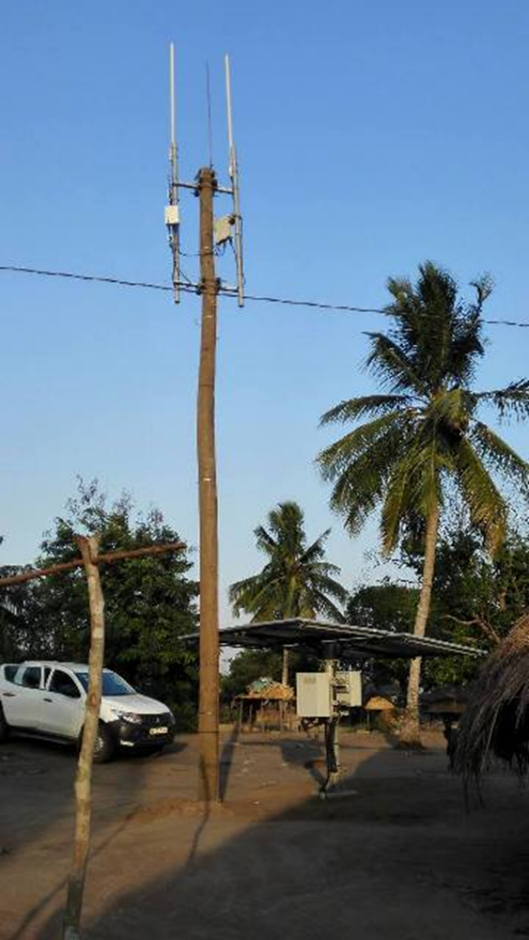
3.1 The Impact of Connectivity
Within two months of RuralStar’s installation, over 500 people connected for the first time. To record some of the changes, Huawei visited the village before and after RuralStar arrived.
Better healthcare: People can now call for ambulance services, which was previously impossible. A nurse who works at the local dispensary can now access online health information to help treat her patients. Previously she had to travel for 20 kilometres to the nearest phone to place orders for new medicines. Now she can do this whenever supplies run low and correct stock levels can be maintained avoiding both wastage and shortages. Health reports can be emailed instead of hand delivered to the authorities 40 kilometres away in Garba Tula Town. Previously the nurse went from door to door to inform people whenever food relief arrived. Now this can be done by phone.
Better security: Villagers reported security as a serious problem with bandit raids all too common. Public security has improved as incidents can now be reported quickly and the Kenya Police Reserve and local Administration Police can mobilise faster whenever clashes are reported. They also now have access to online information, monitor events, and submit reports more quickly.
Better services: Safaricom’s M-PESA application, which is Kenya’s most popular mobile money service (hosted by Huawei technology), became accessible for the first time. Villagers and shopkeepers have used their phones to save and store money, to trade goods, re-stock their stores, and to sell their products securely and with convenience. An M-PESA store has opened and (as of February 2018) has two employees. The local store was able to expand and a number of new jobs have been created. For many workers in Duse, their families live elsewhere, they can now communicate more regularly and send money to distant loved ones. With the help of the local leaders, several young people in Duse have also been able to apply online for jobs, scholarships and college placements that would have been impossible before.
Better education: The Duse primary school has 320 students and eight teachers. According to the head teacher, attendance has improved because of the improved security situation within the village. Teachers with smartphones have been able to access information online and show videos and other content to students to aid in their teaching, as well as staying up to date with government advice on education.
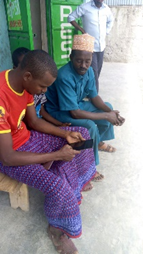
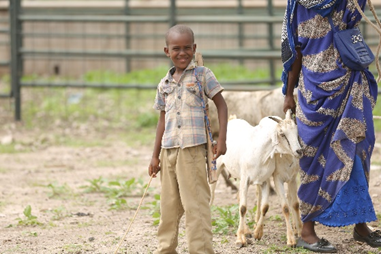
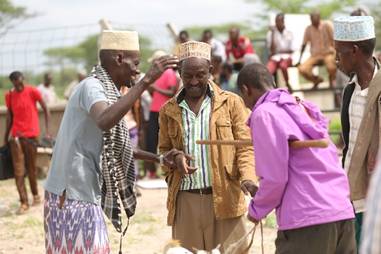
3.2 Looking Ahead
Whilst other challenges associated with the digital divide remains, such as improving basic knowledge and skills to access mobile services, RuralStar and Safaricom have brought a real improvement to Duse villagers’ lives within just a few months. Recognising the need to help people get more use out of their mobile devices and the internet, training is being provided to the community so they can access more services and information.
4. Implementing the Solution
Huawei’s RuralStar2.0 solution was launched in 2017 to reduce the cost of providing rural coverage. It is specifically designed to provide:
- 2G voice, SMS and mobile money services, and
- 3G broadband data services.
With low power consumption, new battery technology, easy installation and innovations in both technology and tower design, RuralStar shortens the return on investment for operators to less than five years and promotes new rural network construction in emerging markets. So far the solution has been successfully deployed by 12 operators in eight counties, including Thailand, Ghana, Indonesia, Nigeria, and Mexico.
Huawei’s RuralStar self-contained cell-site solution makes it possible to extend cellular coverage economically to even very small communities with minimal site preparation or infrastructure requirements by providing:
- An easily deployed wireless backhaul solution based on LTE self-backhaul rather than satellite or Microwave, that significantly reduces transmission costs,
- Automatic antenna alignment, which further reduces civil work costs,
- The option to utilise existing infrastructure such as electric poles or other utility poles; pole height can be as low as 12m (average end-to-end cost: $5K) rather than a 30-50m tower (average end-to-end cost: $120K),
- Full coverage, energy-efficient solar option for where no existing power infrastructure currently exists; the low power-draw BBU and RRU are the most efficient in the industry; total power consumption at around 200W~220W makes solar power a viable option; and OpEX savings compared with diesel fuel costs and maintenance
- Robust materials which can cope with temperatures from in -40°C to +50°C,
- New battery technology which allows lithium and lead-acid batteries to work together, extending battery life-span from 2 years to 5 years,
- Anti-theft fencing and anti-climbing wire to secure the site and prevent RuralStar from being damaged or stolen; batteries can also be deployed underground to prevent theft.
Huawei’s RuralStar is 3GPP standard-compliant, which means it is compatible with multi-vendor networks, and can interoperate with other core networks and remote transmission equipment. It provides 2G/3G/4G services, and it meets global network band requirements. The solution uses non-line-of-sight wireless backhaul technology, which can operate over distances of up to 40km distance, and can provide service in rugged terrains, such as the Thai rainforest, Ghanaian prairies, and mountains in Myanmar.
5. Economic benefits
The GSMA Network Economics team reviews new or disruptive technologies or network management strategies that can deliver efficiencies. It evaluates their potential impact, showcases the “best of the best”, and identifies collaborative actions to support operators in implementing these solutions.
The Network Economics Model creates a baseline by recreating a hypothetical tier 1 operator’s cost structures. It then models innovation scenarios and identifies the delta in OpEX and CapEX terms that these innovations can deliver.
The model is validated by an operator to verify that the outputs are reflective of performance in their own networks. In the case of Huawei’s RuralStar2.0 solution, the outputs have been verified by MTN Ghana, which has deployed the solution in 300 sites across the country.
6. Conclusion
Huawei have worked with Safaricom and with MTN Ghana to provide a cheap and efficient solution to the difficult problem of providing affordable connectivity to remote communities.
Huawei’s RuralStar provides 2G voice, SMS and mobile money services, and 3G broadband data services, with low power consumption, new battery and solar technology, wireless connectivity to the main network and easy installation.
The solution brings real improvements to the lives of those in rural communities, with access to greater resources in education, health, security and business.
